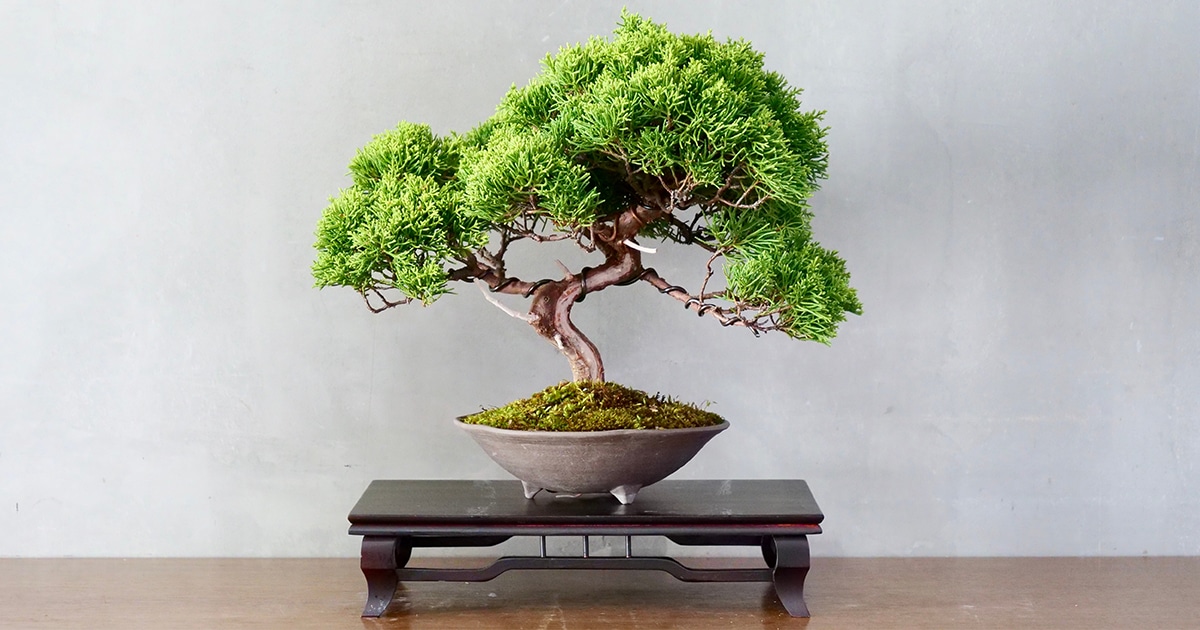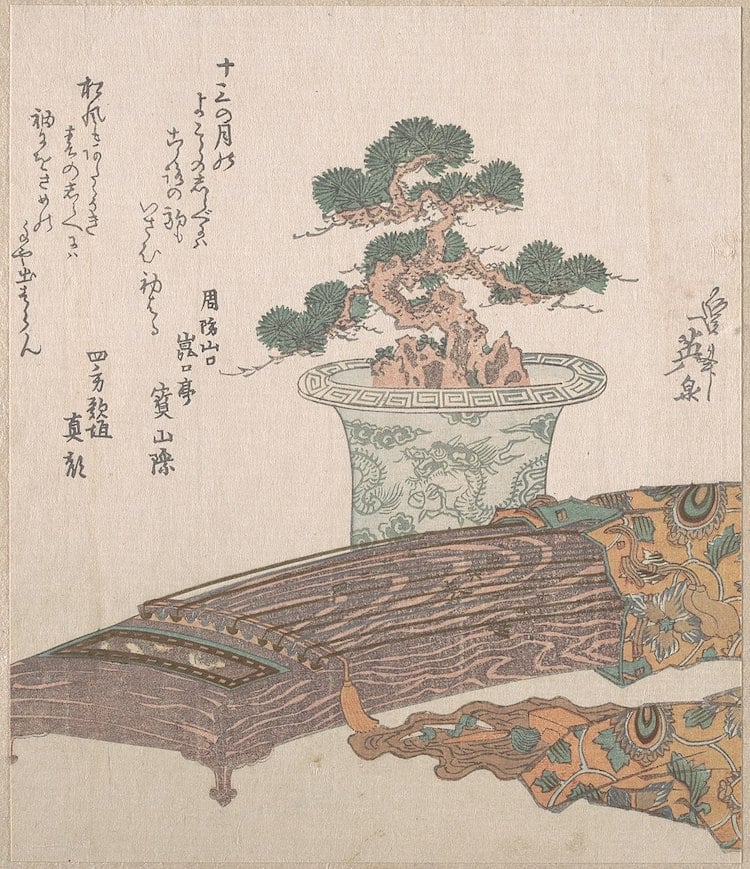Bonsai trees originated in China over a thousand years ago, later refined in Japan. They are miniature trees grown in containers.
Bonsai, meaning “planted in a container,” is an ancient art form. The practice began in China, where it was known as “penjing. ” Japanese monks adopted the technique, refining it into what we recognize today as bonsai. These miniature trees symbolize nature’s beauty and the harmony between man and the environment.
Bonsai care requires patience, skill, and dedication. Enthusiasts around the world cultivate bonsai trees, appreciating their aesthetic and spiritual significance. The art of bonsai encourages mindfulness and a deep connection with nature. Whether you’re a beginner or an expert, bonsai offers a rewarding and serene hobby.
Origins Of Bonsai
The word “bonsai” means “planted in a container.” This practice started long ago. The art of bonsai involves creating miniature trees. These trees mimic the shape and style of full-sized trees. Let’s explore the fascinating origins of bonsai.
Early Beginnings
Bonsai originated in China over 1,000 years ago. The Chinese called it “penjing.” They used small trees and rocks to create landscapes. Japanese monks brought penjing to Japan in the 6th century. The Japanese refined and developed it into bonsai.
In Japan, bonsai became a respected art form. People of all classes enjoyed it. Each tree represented harmony, peace, and balance. The Japanese used special techniques to shape and style the trees.
Cultural Significance
Bonsai holds deep meaning in Japanese culture. It symbolizes patience, effort, and the beauty of nature. Bonsai trees also represent the harmony between man and nature. They are often used in ceremonies and as gifts.
In Japan, bonsai is more than a hobby. It is a way of life. People dedicate years to perfecting their bonsai trees. This dedication reflects their respect for nature and art.
| Aspect | Details |
|---|---|
| Origin | China |
| Introduced to Japan | 6th Century |
| Initial Name | Penjing |
| Japanese Development | Bonsai |
The practice of bonsai spread to the West in the 19th century. Today, people around the world enjoy bonsai. It continues to be a symbol of peace, patience, and artistic skill.

Credit: mymodernmet.com
Bonsai In Ancient China
The history of Bonsai trees begins in ancient China. This ancient art form, known as Penjing, dates back over a thousand years. Chinese practitioners used miniature trees to create landscapes in small containers. These early bonsai trees symbolized harmony, balance, and peace.
Penjing Tradition
The Penjing tradition is the root of bonsai culture. It translates to “tray scenery” and involves creating miniature landscapes. Artists used rocks, water features, and small plants. These elements formed detailed scenes representing natural landscapes.
Penjing artists focused on creating visually striking displays. They emphasized both beauty and balance. This art form was not only about the trees but also about the entire scene. The goal was to capture the essence of nature in a confined space.
Philosophical Roots
The philosophical roots of bonsai are deep and meaningful. Ancient Chinese scholars and monks practiced this art. They believed it brought inner peace and harmony. The trees symbolized strength, resilience, and the enduring spirit of nature.
These miniature landscapes were more than just art. They were meditative tools. Creating and maintaining a bonsai tree required patience and dedication. This practice reflected the values of discipline and mindfulness.
In ancient China, bonsai trees also represented the harmony between man and nature. They were a reminder of the natural world’s beauty. This connection to nature was essential in Chinese culture and philosophy.
| Aspect | Details |
|---|---|
| Origin | Ancient China |
| Art Form | Penjing |
| Philosophy | Harmony, Balance, Peace |
Japanese Influence
The Japanese influence on bonsai tree cultivation is profound. Japan embraced and refined bonsai art, making it globally recognized. Let’s explore how Japan shaped this beautiful tradition.
Adoption And Adaptation
Japan adopted bonsai from China during the Heian period. Japanese artists adapted the practice to their own culture. They focused on simplicity and natural beauty. Bonsai cultivation became an art form in Japan. This art form reflected Japanese aesthetics and philosophy. Japan’s unique climate influenced bonsai styles and techniques.
Zen Buddhism Connection
Zen Buddhism deeply influenced Japanese bonsai. Zen monks practiced bonsai as a form of meditation. They believed bonsai cultivation brought inner peace. Bonsai trees symbolized harmony between nature and humans. Monks created bonsai to reflect natural landscapes. This practice aligned with Zen principles of simplicity and mindfulness.
Bonsai Techniques And Styles
Bonsai trees are miniature trees grown in containers. They are created using special techniques. These techniques help shape the tree and keep it small. There are many styles of Bonsai trees. Each style has its own rules and beauty. Let’s explore some of these techniques and styles.
Pruning And Shaping
Pruning is the first step in creating a Bonsai tree. It involves cutting branches and leaves. This helps control the tree’s size and shape. There are two types of pruning:
- Maintenance Pruning: Keeps the tree’s shape and promotes growth.
- Structural Pruning: Major cuts to shape the tree.
Shaping the Bonsai tree involves bending branches. Wires are used to hold branches in place. The tree is trained to grow in the desired shape. This process takes time and patience.
Popular Styles
There are many Bonsai styles. Each style mimics natural tree forms. Here are some popular styles:
| Style | Description |
|---|---|
| Formal Upright (Chokkan) | The tree has a straight, upright trunk. |
| Informal Upright (Moyogi) | The trunk has gentle curves. |
| Slanting (Shakan) | The trunk grows at an angle. |
| Cascade (Kengai) | The trunk flows downward, like a waterfall. |
| Forest (Yose-ue) | Several trees planted together, like a forest. |
Each style has unique features. Choosing a style depends on the tree species and personal preference.
Global Spread
The art of bonsai, originating in China, has traveled the world. Bonsai trees symbolize patience, care, and the beauty of nature in miniature form. Their journey from Asia to the rest of the world is fascinating.
Introduction To The West
Bonsai trees were first introduced to the West in the late 19th century. Europeans encountered them during trade and cultural exchanges with Japan. The Paris World Fair in 1878 showcased bonsai trees, captivating Western audiences. By the early 20th century, bonsai had gained popularity in Europe and America.
Western artists and botanists were intrigued by bonsai techniques. They began to learn and practice the art of bonsai. This led to the establishment of bonsai clubs and societies in many Western countries.
Modern Popularity
Today, bonsai trees are beloved worldwide. They are enjoyed by hobbyists and professionals alike. Modern technology has made it easier to share bonsai knowledge and techniques. Online communities and forums have sprung up, connecting bonsai enthusiasts globally.
Bonsai trees are now found in many homes, offices, and public spaces. They bring a touch of nature and tranquility to urban environments. Workshops, exhibitions, and competitions are held regularly, further promoting the art of bonsai.
The table below highlights some key events in the global spread of bonsai:
| Year | Event |
|---|---|
| 1878 | Paris World Fair showcases bonsai |
| 1902 | First bonsai club in Europe founded |
| 1965 | First U.S. bonsai exhibition |
| 1990 | Formation of the World Bonsai Friendship Federation |
The global spread of bonsai is a testament to its universal appeal. This ancient art continues to inspire and captivate people everywhere.
Credit: en.wikipedia.org
Bonsai In Contemporary Culture
The art of bonsai has evolved greatly over the centuries. Today, it stands as a symbol of beauty and patience. In modern times, bonsai trees are not just plants but artistic masterpieces. They hold a special place in contemporary culture, influencing art, events, and exhibitions worldwide.
Artistic Expression
Bonsai trees are a form of artistic expression. Artists use them to showcase their creativity. Each tree tells a unique story. The shapes and forms are crafted carefully. It’s like painting or sculpting, but with living plants.
Modern artists blend traditional techniques with new ideas. They experiment with different styles. This fusion creates stunning bonsai displays. These living artworks often feature in galleries and museums.
Cultural Events And Exhibitions
Bonsai trees play a key role in many cultural events. They are the centerpiece of many exhibitions. These events attract bonsai lovers from all over the world. People come to admire the beauty and skill involved.
| Event | Location | Significance |
|---|---|---|
| Bonsai Expo | Tokyo, Japan | Largest bonsai event globally |
| Bonsai Biennale | California, USA | Showcases contemporary bonsai art |
| European Bonsai Convention | Various locations in Europe | Brings together European bonsai enthusiasts |
These events often include workshops and demonstrations. They educate the public about bonsai care and techniques. This knowledge sharing helps keep the bonsai tradition alive. Cultural events also foster a sense of community among bonsai lovers.
Exhibitions often feature rare and ancient bonsai. These trees are hundreds of years old. Their history adds depth to the experience. Visitors appreciate the dedication and care required to maintain these living pieces of art.
Famous Bonsai Masters
The art of Bonsai has a rich history filled with legendary masters. These masters have shaped and refined the practice over centuries. Below are some of the most influential figures in Bonsai history, both from ancient times and modern days.
Historical Figures
Ancient Bonsai masters laid the foundation for this intricate art. Their techniques and philosophies still influence today’s practitioners.
- Kobayashi Issai: A renowned Japanese master, known for his meticulous techniques.
- Hokusai Katsushika: Famous for his Bonsai artwork, blending art and nature.
- Hattori Kazuo: His teachings are still studied and revered in the Bonsai community.
Modern Practitioners
Today’s Bonsai artists continue to innovate and inspire. They bring fresh perspectives to this ancient art.
- Masahiko Kimura: A revolutionary in Bonsai, known for his unconventional styles.
- Kunio Kobayashi: Founder of Shunkaen Bonsai Museum, a hub for Bonsai enthusiasts.
- Ryan Neil: An American Bonsai artist, blending Western and Eastern techniques.
| Master | Contribution |
|---|---|
| Kobayashi Issai | Meticulous techniques |
| Hokusai Katsushika | Bonsai artwork |
| Hattori Kazuo | Revered teachings |
| Masahiko Kimura | Unconventional styles |
| Kunio Kobayashi | Shunkaen Bonsai Museum |
| Ryan Neil | Blending techniques |
Preservation And Future
The art of bonsai has a rich history. Preserving this tradition is essential for future generations. Conservation and technological advancements play a vital role.
Conservation Efforts
Efforts to preserve bonsai trees are increasing. Experts focus on maintaining genetic diversity. They ensure traditional techniques are passed down.
- Botanical Gardens: Many botanical gardens house bonsai collections. These gardens educate the public on bonsai care.
- Bonsai Clubs: Clubs and societies promote bonsai culture. Members share knowledge and skills.
- Workshops and Exhibitions: Events bring enthusiasts together. They learn new techniques and appreciate the art form.
Bonsai In The Digital Age
Technology is transforming bonsai preservation. Digital platforms offer new opportunities.
- Online Tutorials: Many tutorials teach bonsai techniques. These are accessible to everyone.
- Virtual Communities: Enthusiasts connect through online forums. They share tips and experiences.
- Apps and Software: Special apps help track bonsai care. Users receive reminders for watering and pruning.
The future of bonsai is bright. Conservation efforts and digital tools ensure its survival. The art will continue to thrive, evolving with the times.

Credit: mymodernmet.com
Conclusion
Bonsai trees hold a rich history that spans centuries. They symbolize patience, dedication, and artistic skill. Understanding their origins deepens our appreciation for this ancient art form. Whether a hobbyist or a seasoned grower, cultivating bonsai connects us to nature and tradition.
Explore this captivating world and start your bonsai journey today.
